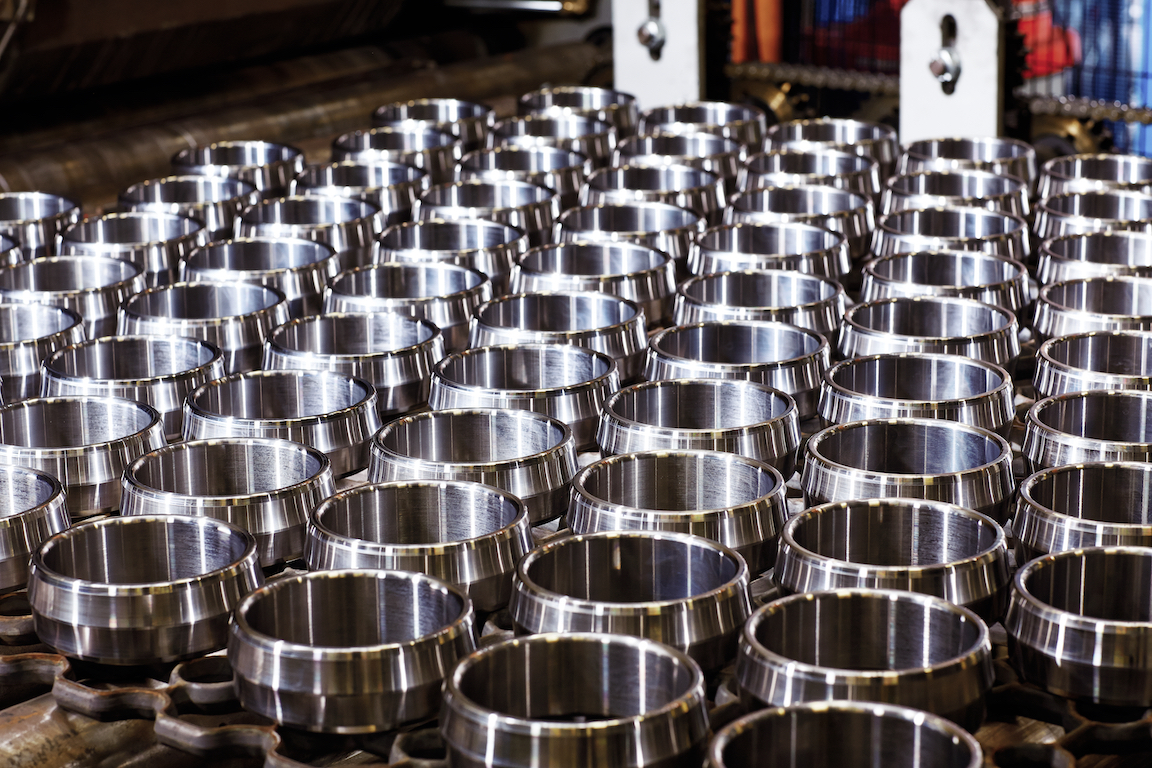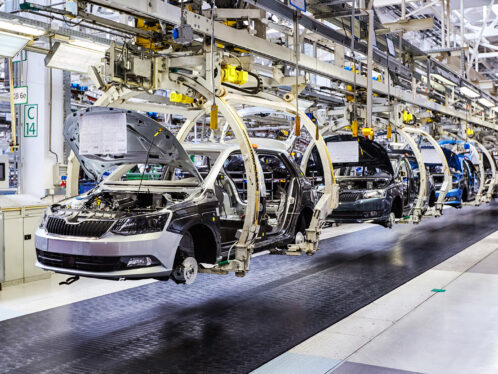
Spanish turbines catch winds of change
Summary
Collaboration for special products
Ecotècnia has worked closely with SKF for many years to design and produce the bearings it needs. SKF has created tailor-made bearings for the 750 kW turbine and is working on further special products for the 1.3 MW and 1.6 MW prototypes.
According to Ecotècnia, bearing performance is particularly important, because of the extra demands imposed by the complex terrain in which its turbines are situated. In the constructive solution adopted by Ecotècnia, the drive train reduces the loading, compared with other types of aero-generators, and this guarantees greater reliability of the gearbox.
The bearings in the hub are especially important. After years of joint discussions, SKF has evolved taper roller bearings for Ecotècnia for use in the hub, using advanced computerised calculation programs such as Beacon and FEM. The computer simulation shows how the bearing will work before it is tested in practice.
The technical teams of both companies are in day-to-day contact, with full access to all relevant information. SKF works with the special requirements of these turbines, and expects to continue its long-term collaboration on special products.
Spain’s Ecotècnia has combined green ideals with technical know-how to create wind turbines that stand up to the challenges of Spain’s rocky terrain and erratic wind conditions.The Spanish wind turbine manufacturer Ecotècnia was launched 20 years ago in Barcelona by a group of engineering graduates who dreamed of combining technological advance with environmental protection – and making money at it.
In 1981, when Ecotècnia was founded, it was one of only two producers of aeolian generators (wind turbines) in Spain. In fact, there were only eight in the world. Wind turbine manufacture is now a booming business, growing at 30 percent annually, and Ecotècnia has become a leader in the design of wind generators to accommodate complex terrain and variable winds.
Ecotècnia’s first project, funded by Spain’s Science Ministry, was to develop a small, wind-powered 30-kilowatt generator. “By 1984 we had a product but there was no market,” says Antoni Martinez, Ecotècnia’s director general. “We had to generate the market from nothing.”
Further government funding enabled the company to build experimental prototypes and small “wind” farms in various windy spots around Spain and to develop a new, bigger machine – delivering 150 kilowatts – that in 1991 earned recognition as one of the best performers in Europe. Spain’s government continued to offer financial support, but Ecotècnia’s survival remained in doubt.
In 1992 a joint US-Spanish wind farm was created in Tarifa, near Gibraltar. Ecotècnia provided 50 150-kilowatt windmills, 25 percent of the park’s power. “That was our first commercial project, and we were able to show that our technology was vastly superior to the American technology. All our subsequent development was based on that big break,” Martinez says.
Mountainous and rugged terrain
Ecotècnia went on to develop 750-kilowatt and 1,250-kilowatt machines and focused on manufacturing and installing turbines specially designed for mountainous and rugged terrain. “Spain is much more mountainous than elsewhere in northern Europe,” Martinez says. “We had to put turbines up mountains and in areas without roads. We had to build our own roads and use heavy equipment. It added 20 percent to our costs, compared with those of Denmark or Germany.”
In addition, Spain’s best wind farms have uneven, gusty winds that often blow vertically up hillsides instead of horizontally, and from all directions. The turbines had to be strengthened at the base to cope with a turbulence coefficient of 20 percent, compared with the usual 10 percent.
The challenge was to produce the same energy with fewer windmills and at the same cost. To answer this challenge, Ecotècnia built machines that were lighter than average, in three detachable parts, that could be transported in smaller vehicles and assembled on the spot with smaller cranes. The company worked to prolong the working life of its turbines, and they refined the mechanical design to eliminate sources of energy waste.
Staff maintained
Ecotècnia employs and trains 36 technicians to monitor and service their turbines. “We think it’s safer to employ our own people, and we’re sure it makes the machines work better,” Martinez says. “If any weaknesses are detected we receive the input on how our machines can be improved.”
Each park has a control centre where two or three technicians monitor the windmills and communicate via a computer link to Ecotècnia’s head office. If problems arise, they can be analysed and resolved immediately. Every machine has its own maintenance manual and servicing cycle (“like a car,” says Martinez). Each turbine is checked every six to 12 months, which means that one or two are examined every day. The machines remain in operation during maintenance checks. The repair specialists gain access up the tower via an internal ladder. This, Martinez says, is very demanding and specialised work. Performing hands-on service on a turbine high of the ground, often in difficult weather is not for everybody.
In remote areas, servicing each windmill’s security and alarm system is crucial, to ensure that the machine stops automatically if electric current should fail or if wind speed should exceed 25 metres per second.
There are more than 800 windmills from Ecotècnia operating in parks throughout Spain as well as in Cuba, India and Japan. Ecotècnia’s administrative headquarters remain in Barcelona, but the company’s main manufacturing plants are in northern Spain, in Galicia and Navarra.
Ecotècnia’s manufacturing plants are built near wind parks, providing local jobs and industrial infrastructure to the area. Regional authorities, whose permission is needed before wind parks can be established, are mostly in favour of wind power, since it is cleaner than the alternatives and provides local employment and an industrial base in remote areas.
“Local authorities asked us to develop our manufacturing plants near the parks,” says Martinez. “Some gave us subsidies to do so. In any case it was a good way of selling the idea to local people.” The plants, at As Somozas in Galicia and Buñuel in Navarra, initially produced machinery for several nearby wind farms, but since they’ve been completed, expanding demand elsewhere has ensured continued activity for the plants. The biggest farm to date, near the northern Spanish city of Burgos, will open shortly with 133 turbines, projected to generate 99.7 megawatts of power.
Ecotècnia is starting to build a new factory in Zamora in northwestern Spain, near Portugal, to produce towers for the turbines. Overall demand for turbines is growing at 30 percent a year and is expected to continue over the next decade. However, the growth rate is dependent on the speed at which permission to develop land is granted, how quickly connections are made with the national grid and how fast environmental impact studies are completed. If all goes well, the time span from planning to operation of a wind farm is normally about five years.
An industrial cooperative
In 1999, to further international expansion, Ecotècnia joined the Mondragón Corporation Cooperative (MCC). This is an industrial cooperative in the Basque country that has its own university, three research-and-development centres and operations worldwide. “We chose Mondragón because it kept alive our own cooperative ideal and shared our values about the future of the company,” Martinez explains.
Ecotècnia has always espoused the cooperative structure. Of Ecotècnia’s 250 staff – 100 in Barcelona – 45 are partners, or co-owners. “People are motivated and enthusiastic, that’s the important thing,” says Martinez. “They know why they are doing what they’re doing. There is fluidity of information and people understand the broader picture.”
However, Ecotècnia’s ownership structure limited its financial potential, making it difficult to raise new capital. So Ecotècnia joined MCC. The decision gives the company access to resources to develop new technology for renewable energy which, Martinez concludes, “is the key to the future.” And it will help Ecotècnia’s export drive. MCC, which already sells 55 percent of its output abroad, can support Ecotècnia in its efforts to develop more efficient and lightweight machines more cheaply for export to countries such as Argentina, Egypt, France, Turkey and Portugal.
Elizabeth Nash
a freelance journalist based in Madrid
photos Ecotècnia




